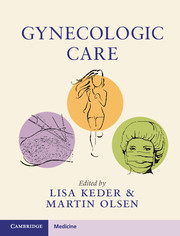Book contents
16 - First Trimester Spontaneous Abortion
from Section 3 - Infertility
Published online by Cambridge University Press: 01 February 2018
Summary
Introduction
First trimester spontaneous abortion (SAB) is a common phenomenon experienced by many women. It is the most common obstetric complication encountered in clinical practice. Although it rarely results in significant physical morbidity, it can render significant psychological angst for the patient. It is imperative that obstetricians and gynecologists be well versed in the diagnostic tools available to distinguish viable versus nonviable pregnancies in order to avoid termination of a potentially viable pregnancy. Accurate diagnosis also avoids giving the patient reassurance when a pregnancy is likely nonviable [1]. Obstetricians and gynecologists should offer a full range of management options including expectant, medical, and surgical management for first trimester SAB, all of which have proven to be effective and accepted by patients.
Scope of the Problem
First trimester SAB occurs in approximately 30 percent of biochemical pregnancies and 10 percent of all clinically recognized pregnancies. Approximately 80 percent of all pregnancy losses occur within the first trimester [1,2].
Although SAB rarely causes significant physical morbidity, the psychological effects of first trimester SAB can be devastating. As many as 50 percent of women who experience a first trimester SAB are psychologically affected, and these effects can last 6–12 months. Most women experience anxiety and depression, but 10–50 percent may develop major depressive disorder [1].
No interventions have been proven to prevent first trimester SAB except addressing modifiable risk factors and treating underlying maternal conditions. Cochrane reviews have shown that bed rest, vitamin supplementation, and/or progesterone use are not effective in preventing first trimester SAB [3–5].
Definition
Spontaneous abortion is defined as pregnancy loss prior to 20 weeks gestation. Pregnancy loss after 20 weeks gestation is termed fetal loss or stillbirth. Pregnancy loss can also be classified based on stages of gestational development including anembryonic, embryonic, and fetal. The anembryonic, or preembryonic, stage begins at conception and lasts through five weeks gestation (based on the first day of last menstrual period). Previously known as a “blighted ovum,” this terminology has been abandoned. The embryonic stage lasts from six through nine weeks gestation. The fetal stage begins at 10 weeks gestation and lasts throughout the rest of the pregnancy.
- Type
- Chapter
- Information
- Gynecologic Care , pp. 151 - 161Publisher: Cambridge University PressPrint publication year: 2018

